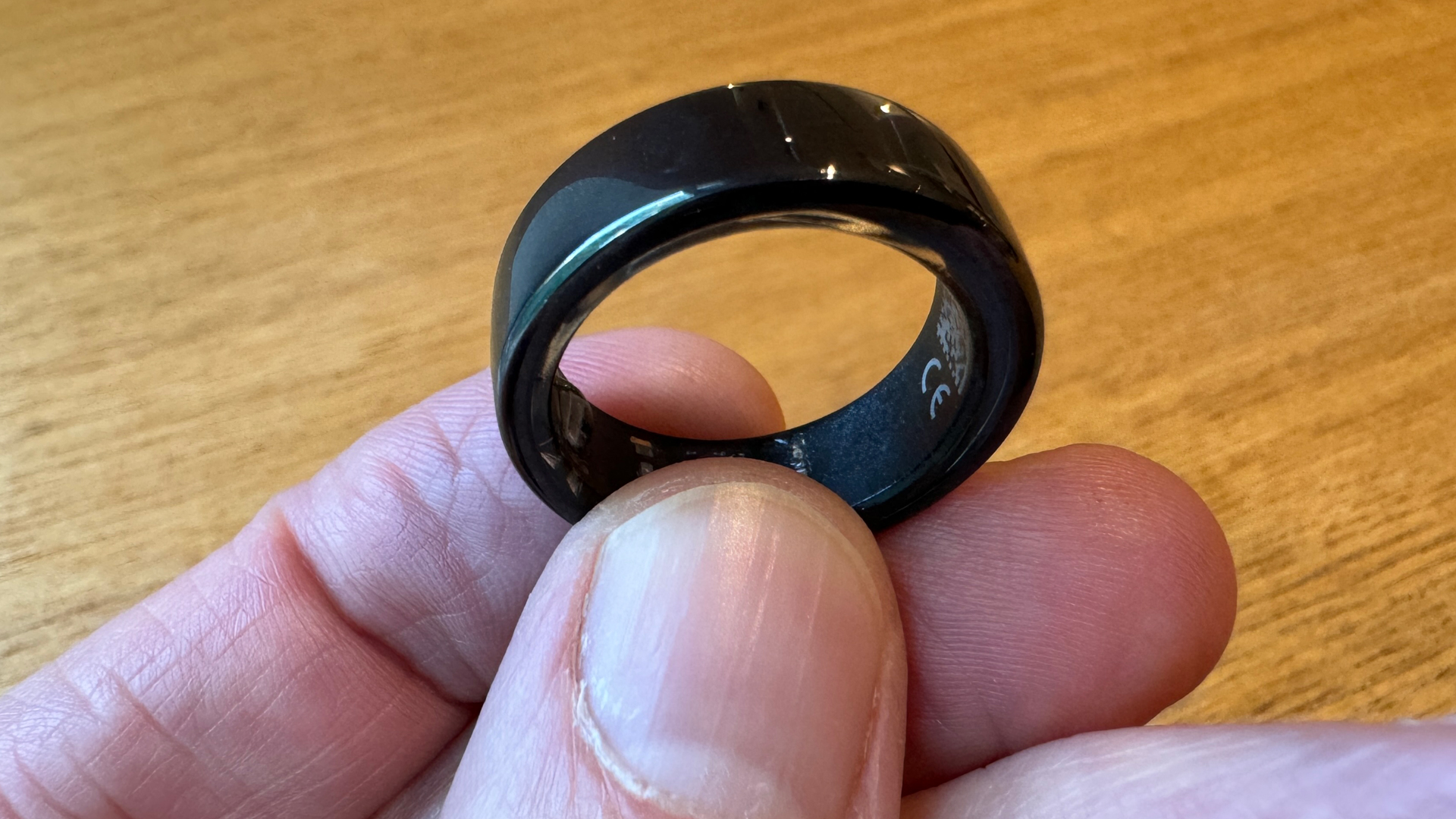
I’m not much of a jewelry or ring-wearer beyond the gold band that adorns a digit on my left hand, signifying 33 years of marital bliss. But I’ve spent years eyeing the gray and black smart rings on my friends' and colleagues’ hands. Many swear by the best smart rings, but a few wore them for a time and then gave them up.
I was intrigued, I guess, because, as much as I love my Apple Watch (and other smartwatches I’ve tried), I wondered if a smart ring could free me from one wrist-bound screen.
When I sat with Oura’s CEO Tom Hale a few months ago, he made a good case for the finger-based-band of technology. He boasted that his Oura Ring’s battery is a tenth the size of the one in an Apple Watch but provides four times the battery life (spoiler alert: it’s more like three times) and explained that despite its diminutive size, the health and activity tracking is every bit as robust as you might get with a smartwatch.
“It’s not a fitness tracker, it’s a health tracker. Health is what you should be looking at every day,” noted Hale.
I told him I was considering switching to a smart ring, but Hale said that for many people, it’s not an all-or-nothing proposition. Of Oura’s customers, 66% have a second wearable, and 40%, like me, are sporting an Apple Watch.
Hale made it clear, though, that he considers’ Oura’s health-tracking technology superior to what you get with the best smartwatch. Oura Ring’s sensors sit, Hale told me, just 2mm away from arterial blood flow and that they get a “50-to-100 times stronger signal strength” than you get on a smartwatch.
In a more recent update, the Oura ring will soon be able to give you a CVA or cardiovascular age reading. One that’s lower than your actual age is good news for you. As of this writing, the feature was still slowly rolling out to users.
Finally, there is the low-profile benefit of a smart ring: no screen, no taps. It just passively reads your health, activity, and sleep state. Granted, there’s the associated Oura app screen, but I wondered how often I’d even look at that. (Narrator: “More than he thought but still not enough.”)
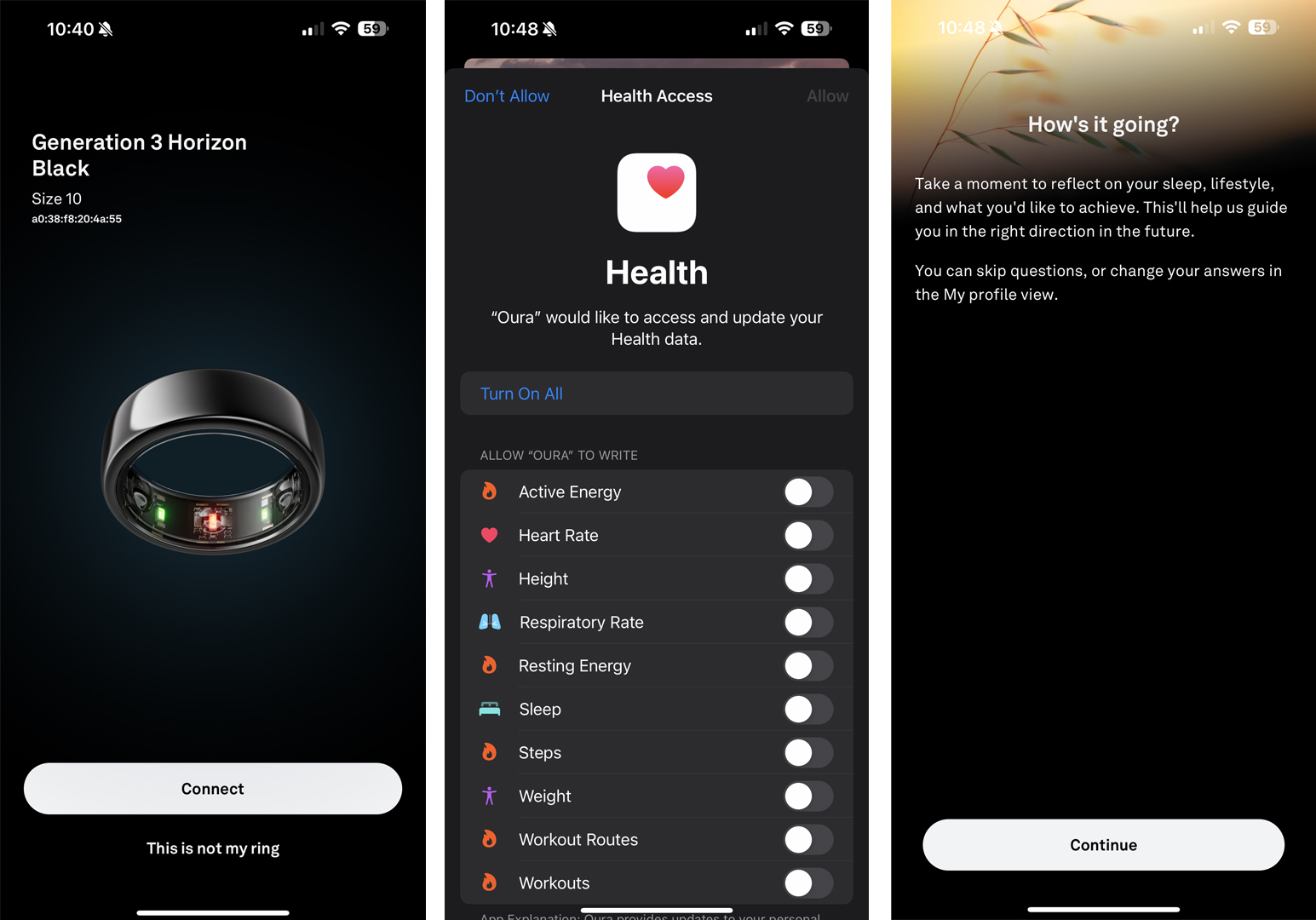
Put a ring on it
I’d heard enough and agreed it was time to test drive my first smart ring.
Unlike buying a smartwatch where you choose from one of two sizes (usually 41mm or 44mm) and then adjust the band to suit your comfort, smart rings like Oura Ring are fixed metal and/or plastic bands (stuffed with sensors and technology) and, if you’ve ever looked at anyone else’s hands, you know one size does not fit all.
Hale had warned me that I’d need a sizing kit and then, once I’d chosen a size, to wear a dummy plastic ring for a few days. Sleeping with it was important, too, because, as Hale explained, “fingers swell at night.” (Narrator: “Lance’s sleeping fingers swell far more than he thought.”)
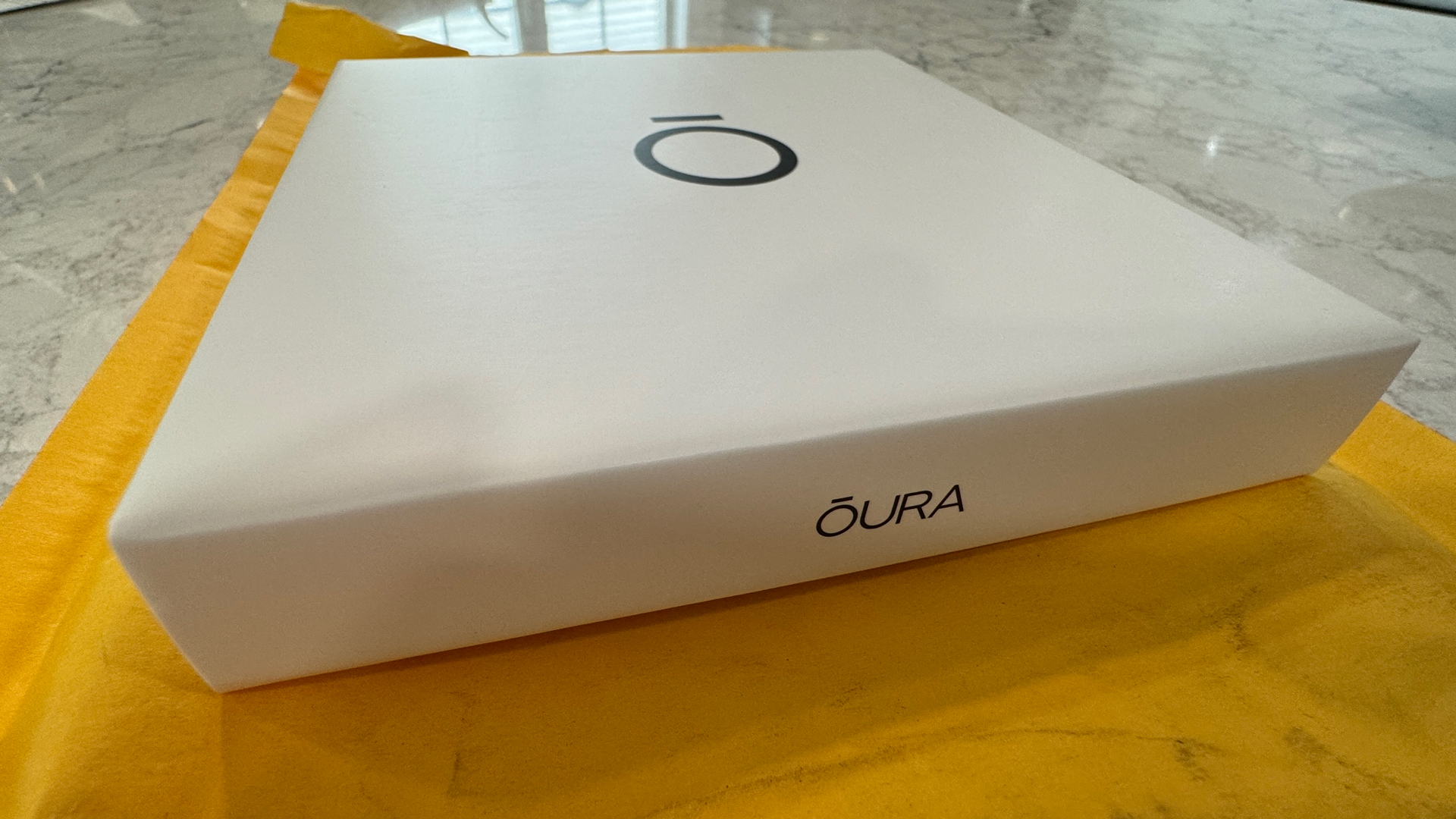
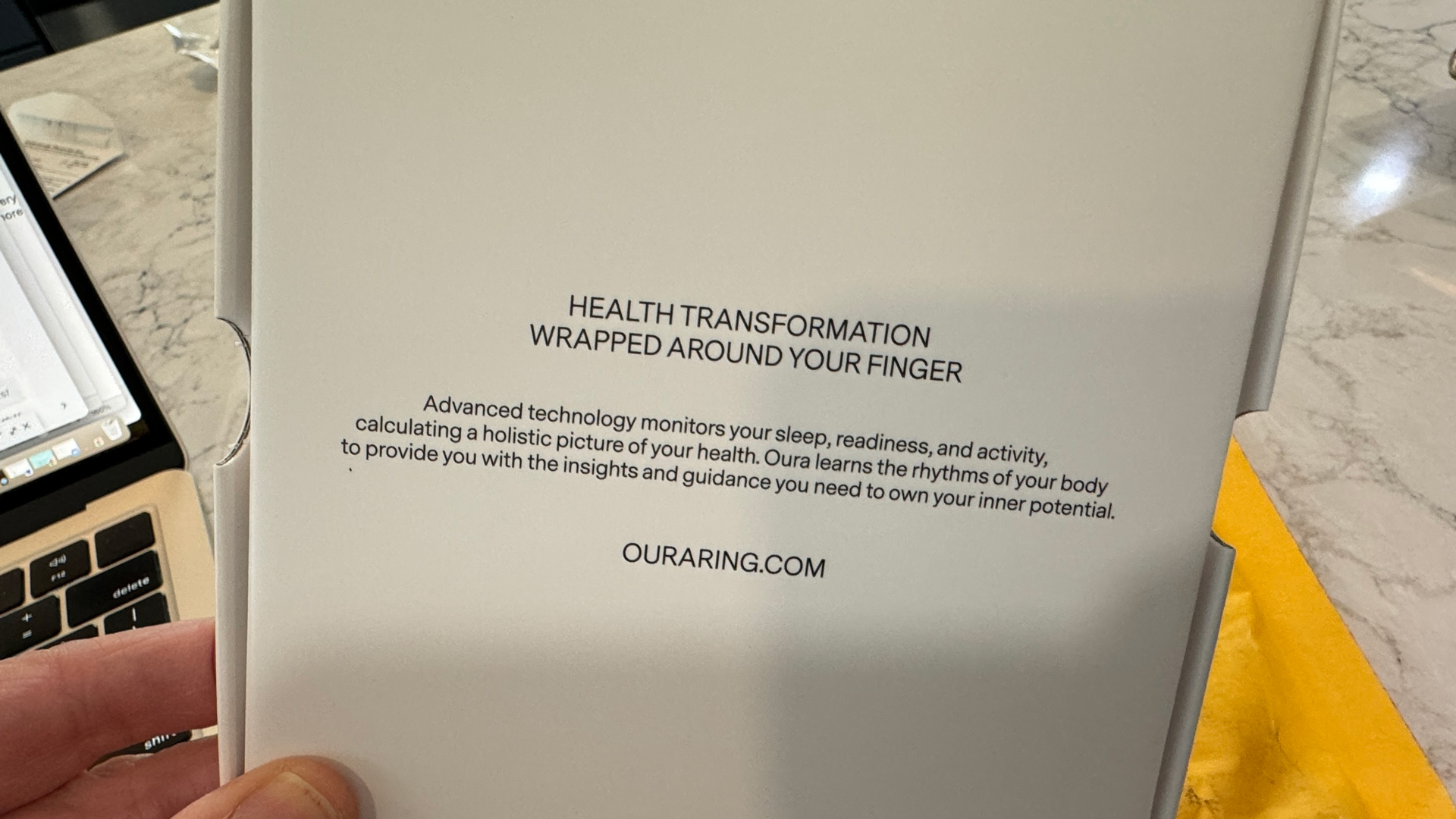
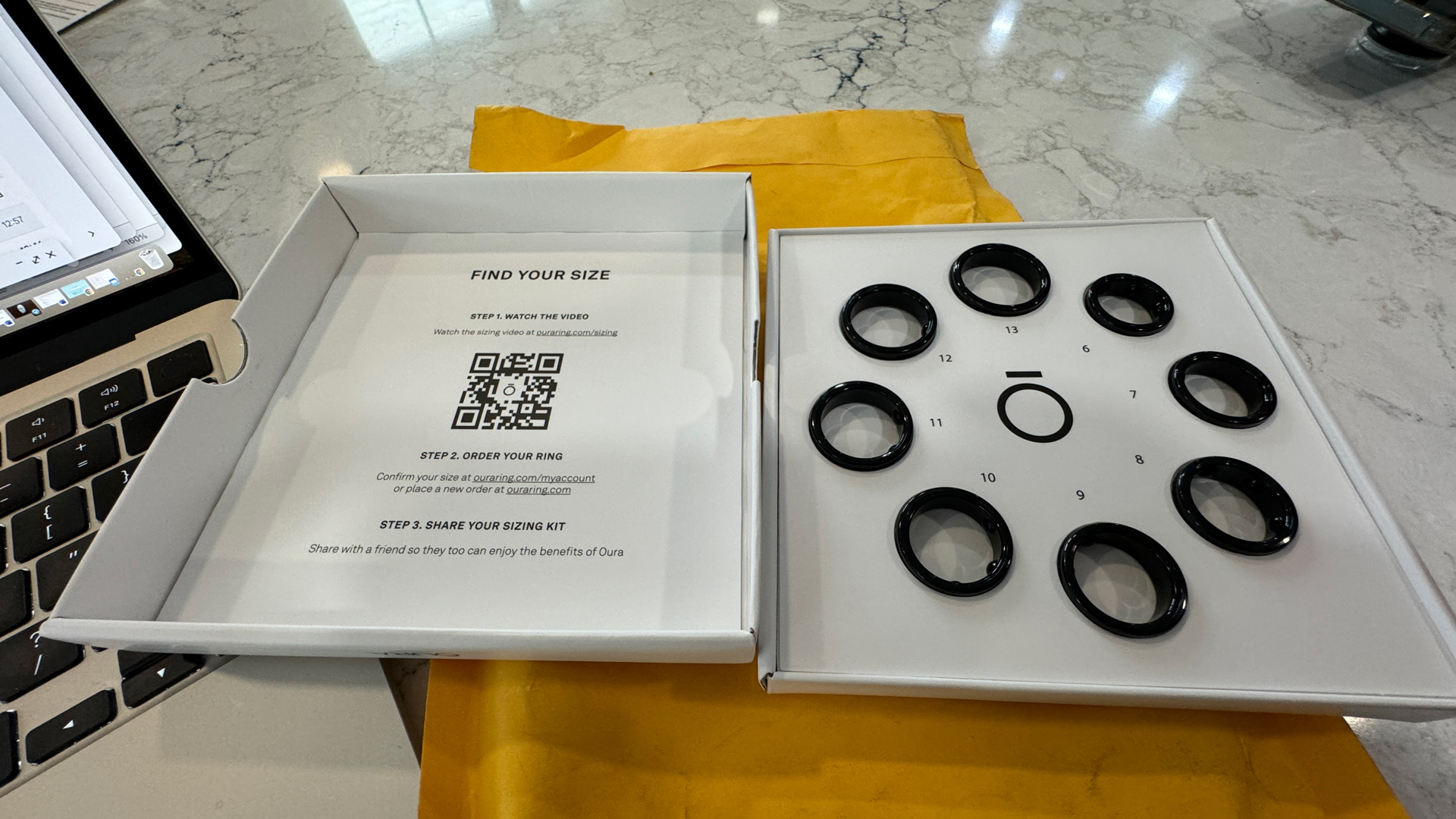
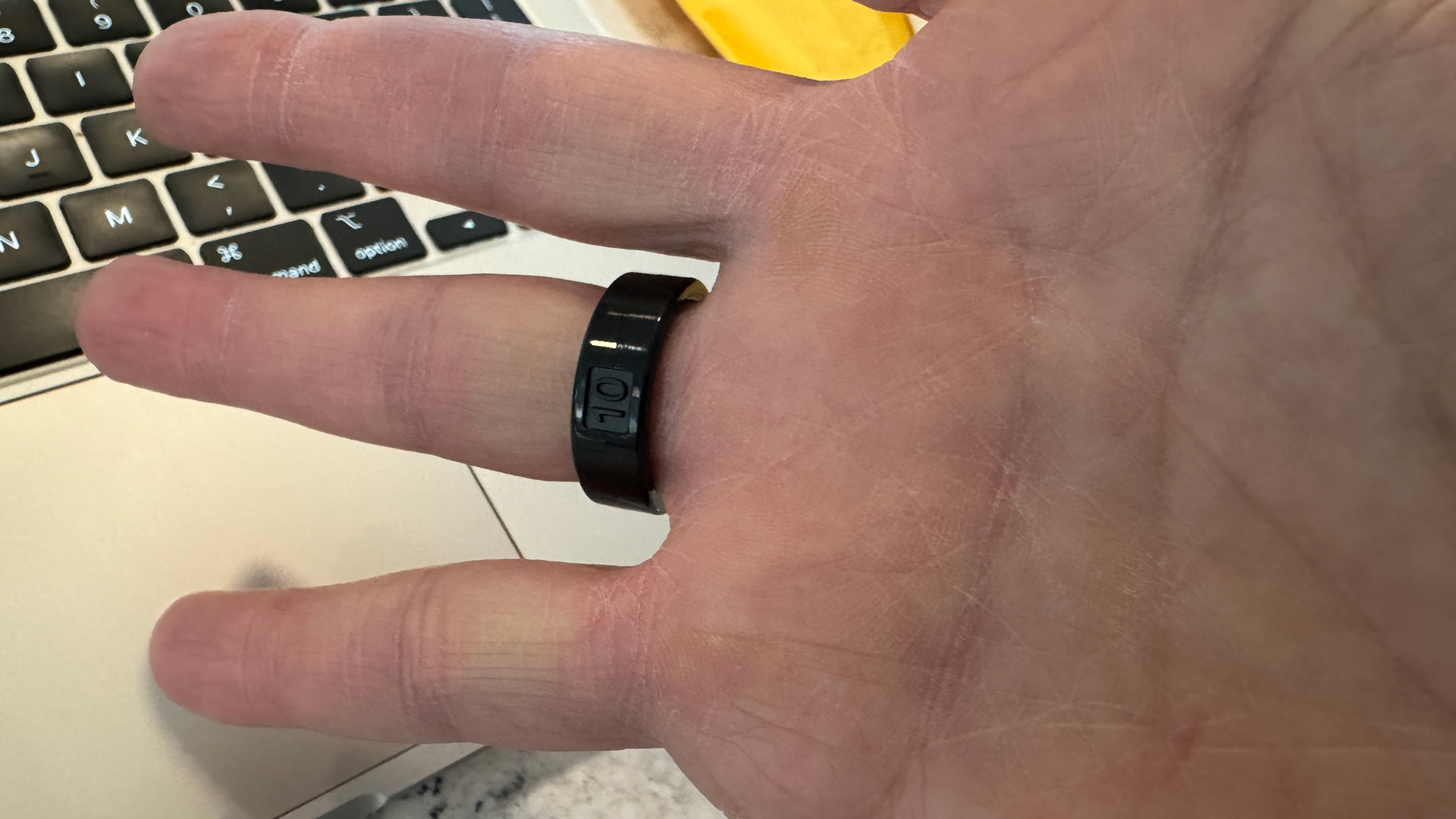
Once you register on the site, Oura will send out a sizing kit with eight different sizes. I chose my ring finger on my right hand and then a size 10 dummy. Even though I noticed it was slightly harder to slide off in the morning, I knew I had my size. A week later, the Oura ring arrived.
Whereas my dummy ring was black plastic, my chosen, real Oura Ring Gen 3 Horizon Black Model ($299 (about £230 / AU$420) is shiny, metallic, and black and, to my surprise, just slightly larger than the plastic dummy I’d been wearing for the past week. Compared to my wedding ring, the Oura Ring is statement-sized. Nevertheless, the ring is comfortable, and I quickly forgot I was wearing it.
No Apple today
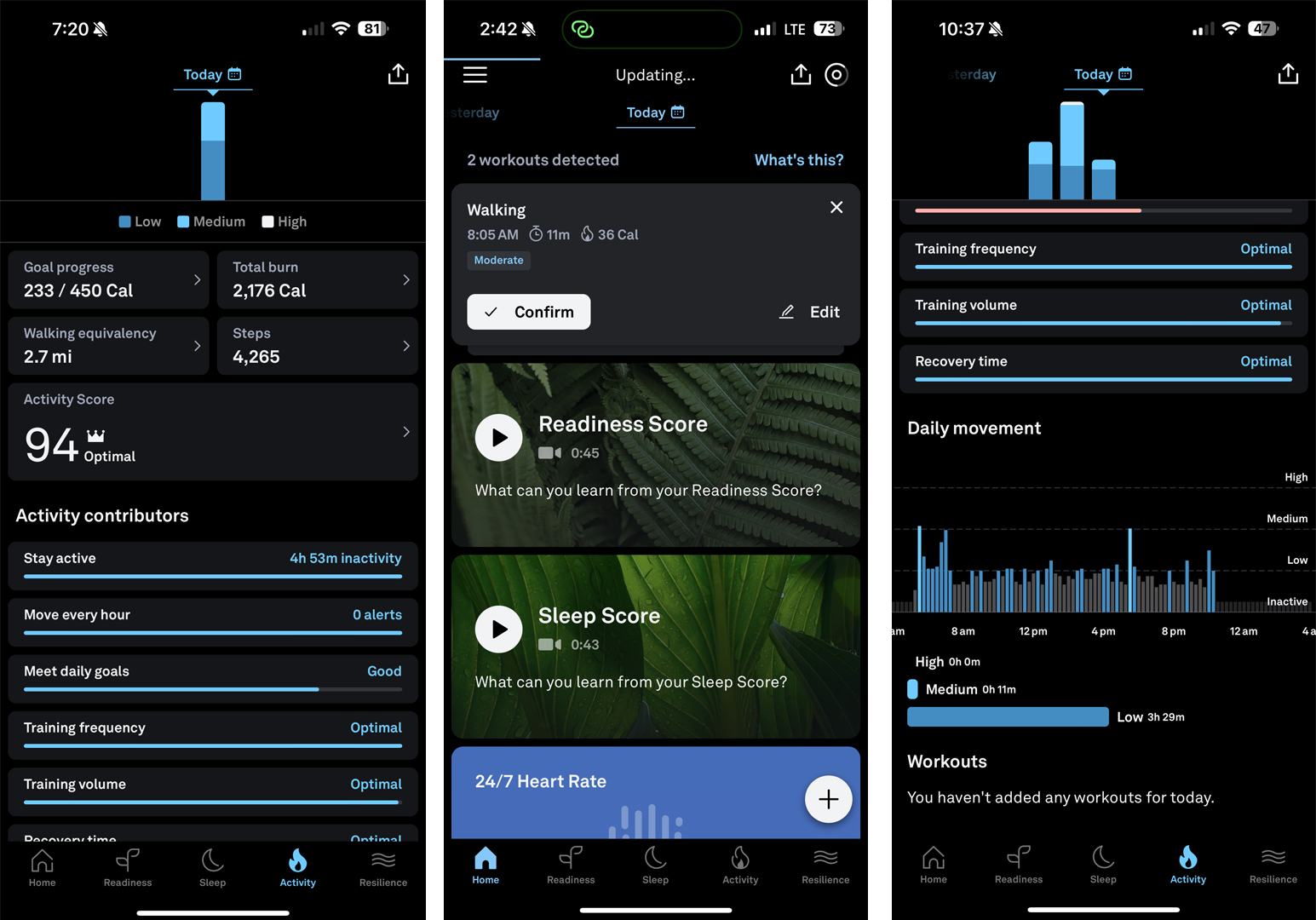
For my wearable experiment, I stopped wearing the Apple Watch, which had the added benefit of opening my wrist up to my vast collection of analog and classic digital watches.
As I mentioned, Oura Ring doesn’t have a screen, but the app can be just as nudgey as your Apple Watch. I got notifications on my iPhone to get moving and that I’d been more or less active than usual. I didn’t mind, but it also became clear that smart rings are almost as beholden to apps and screens as your typical smartwatch.
I started sleeping with the Oura Ring, which was a relief since I’ve never enjoyed sleeping with a smartwatch. Part of me wonders if all this tracking makes any sense at all…but I digress.
While the shuteye was good, I wondered where the Oura app was keeping my sleep stats. It seemed to miss days at a time. Then I noticed it was also missing my workouts. Eventually, I realized that, unlike the Apple Watch, where tracking and reporting are in real-time, the Oura Ring banks things and uploads when you open the app. This was not consistently the case. I noticed how the Ring got better at tracking my sleep, but I still had to go in to tell it what kind of workout it detected (“Maybe: Walking”?) The Apple Watch can detect some physical activities on its own (not always accurately), but usually, I choose the kind of workout I’m undertaking before I begin.
My morning workouts include curls, pushups, crunches, isometrics, and pull-ups. The Oura Ring proved perfect for all but one of these routines. I tried a pullup with the ring on and the band pressed painfully into my digit. I had to remove it and switch to the watch. I also found I couldn't bowl with it on.
Back to Apple
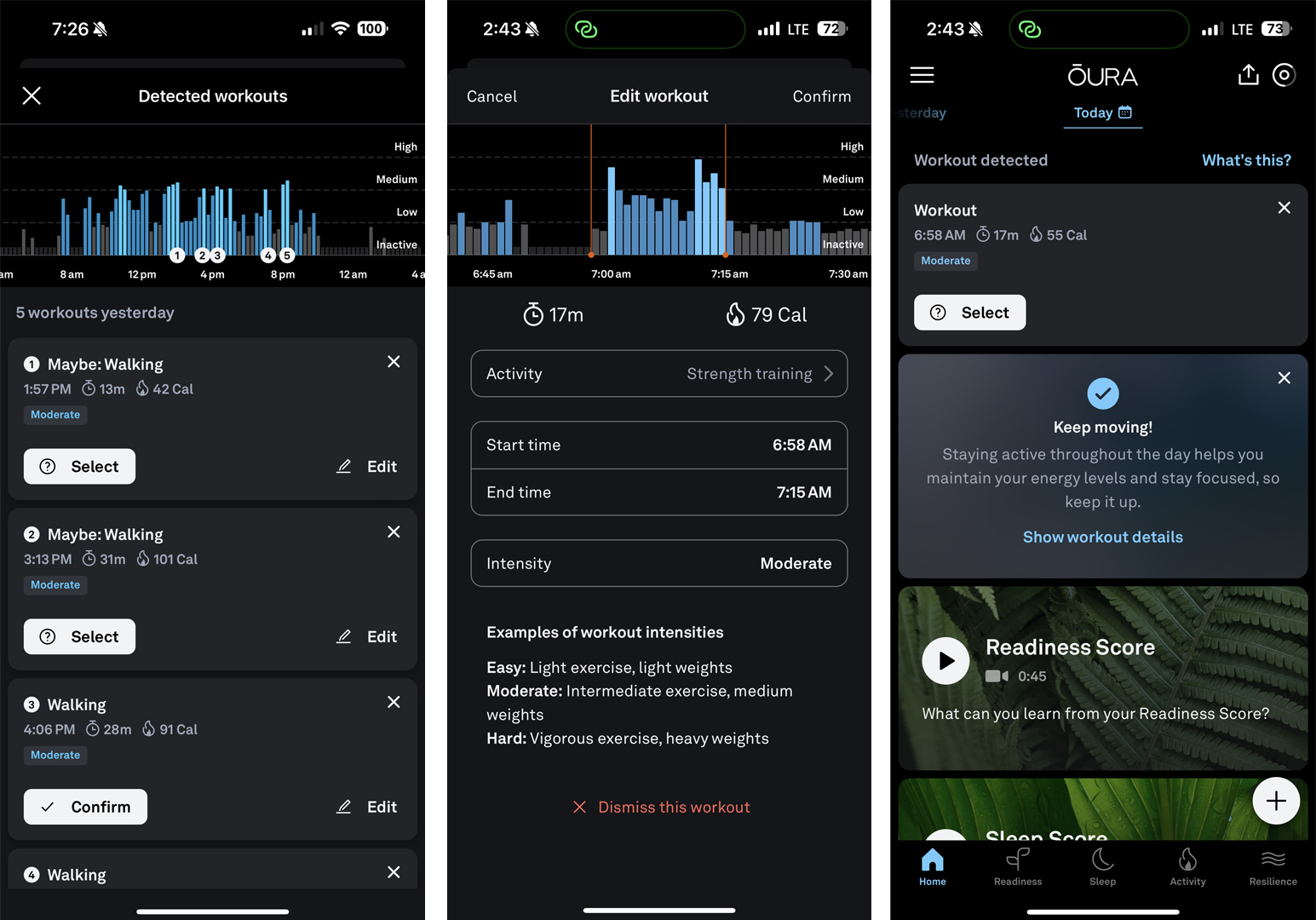
I found myself using the Apple Watch to track more and more of my workouts because I didn’t like going back into the Oura App and trying to remember if that workout was a walk or a set of pushups.
The Oura App is deep and rangy, with frequent pitches for new features. Hale told me, “People don’t always understand how deep the software experience is,” and it’s true. It’s the kind of app that prizes depth – sometimes over clarity.
There are things about the Oura App and system that I like. I find sleep tracking accurate and insightful. It’s not that it helps me get a better sleep, but it does commiserate when I’ve slept poorly.
The Readiness and Resiliency scores are useful and have given me a new way of thinking about my health and stress levels. When there’s an issue in the various metrics, Oura’s app says “Pay Attention” which means there’s been some sort of negative variance. In my case, my Heart Rate Variability trend was a bit off possibly indicating elevated stress levels (odd since I was on vacation).
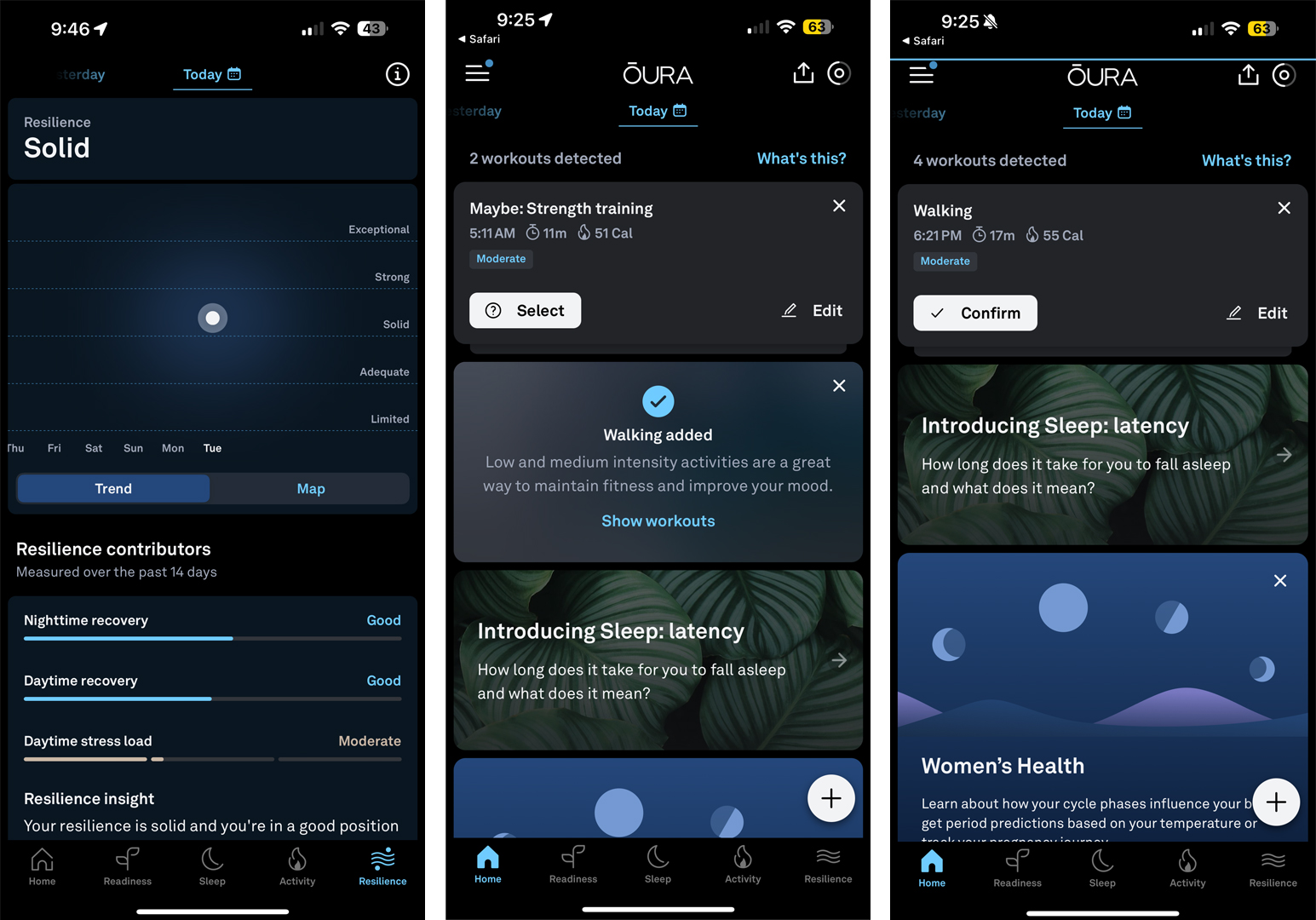
Oura ring is essentially waterproof, meaning I no longer worry about removing my wearable before a shower. That’s a nice benefit and the less I remove the ring the lower the chance that I’ll forget to put it back on.
As Hale promised, battery life is longer than I get with the Apple Watch Series 9. Where Apple’s wearable can last for a solid day and a half, the Oura Ring’s battery is good for three days. The problem is that I usually have no idea how much juice is left in the ring since there isn't any visual indication of battery life. I guess if I checked the app more frequently, I’d know better, but, as I noted, I often forgot I was wearing the Oura ring and usually forgot about the App, too. This was one of the reasons some people told me they stopped wearing the ring: they kept forgetting to charge it, which means it’s then nothing more than a pretty piece of finger jewelry.
You're wearing it wrong
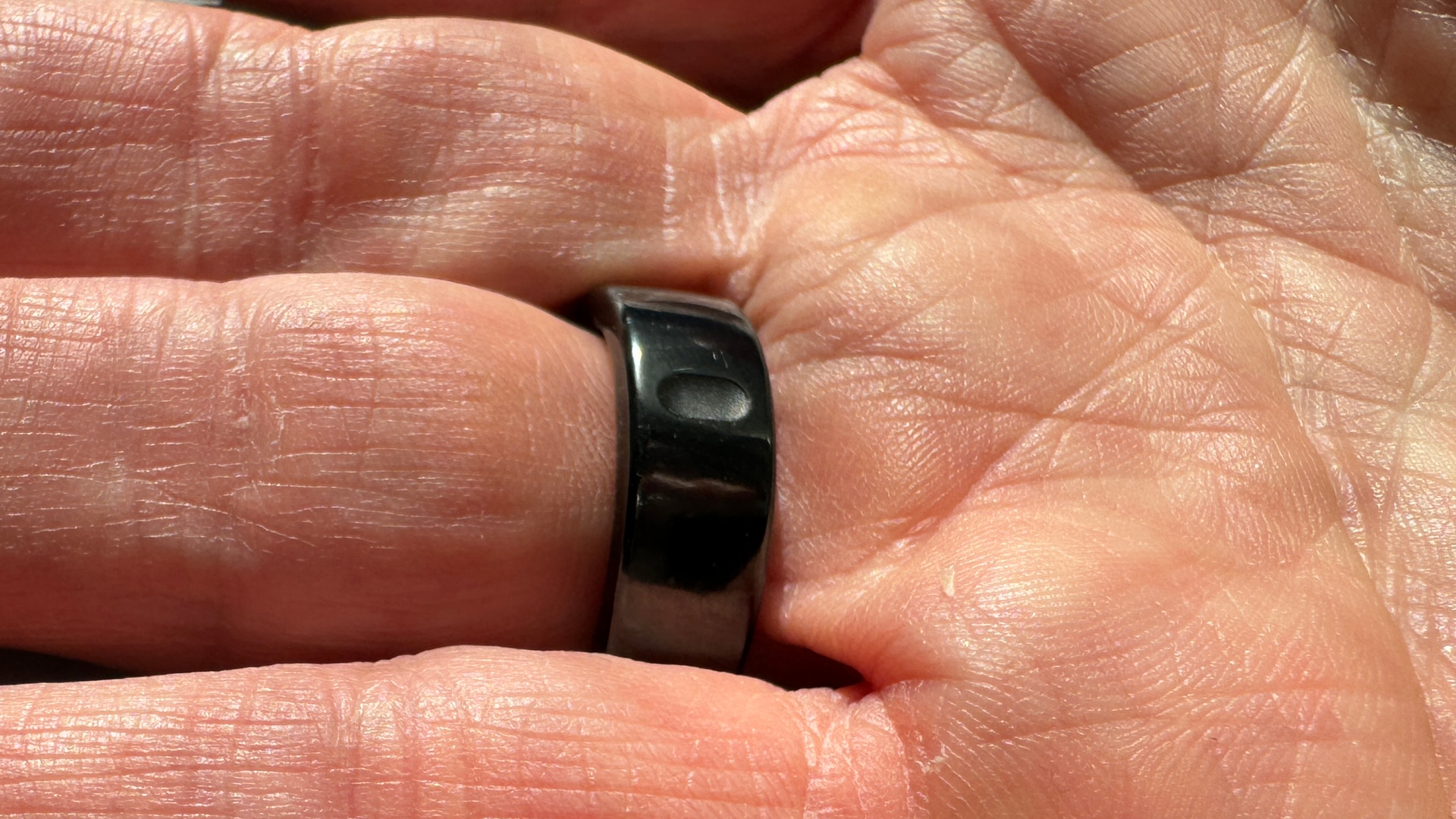
One bit of unexpected stress is that to maximize the ring’s effectiveness, I needed to keep it spun a certain way on my finger. If the little indent (a.k.a. "dimple") on the ring is not on the same side as my palm, the critical sensors aren’t close to those arteries. Occasionally, I’d have to twist the ring around until the sensors were in the right position. Hmm, maybe that’s why my HRV was a bit off.
The good news is that a notification would usually alert me if the battery life was too low to effectively track my sleep and tell me to charge before sleeping. Oddly, this reminded me of the Apple Watch and its occasional reminders, like when battery life drops below 20%, charge before sleep
The Oura Ring has a small, proprietary, USB-C compatible charge base where you drop the ring. I can’t recall if I ever noticed a “fully charged” alert from the app.
I’m still wearing the Oura Ring, but I don’t know if I’m committed to it. As much as I enjoy having one fewer screen, I think I like actively selecting workouts on my Apple Watch and all the alerts and communication I get through it. I will, it seems, be in that 40% of Oura Ring wearers who persist in wearing the ring and watch together.
Yes, that rings true to me.
You might also like
- I got my hands on an early Samsung Galaxy Ring prototype: here's ...
- Best smart ring: The Samsung Galaxy Ring rivals available ...
- Smart ring vs smartwatch: Which fitness tracking wearable is best for ...
- Samsung Galaxy Ring: the smart ring is now official, here's ...
- Samsung's Galaxy Ring reveal means smart rings have finally gone ...







